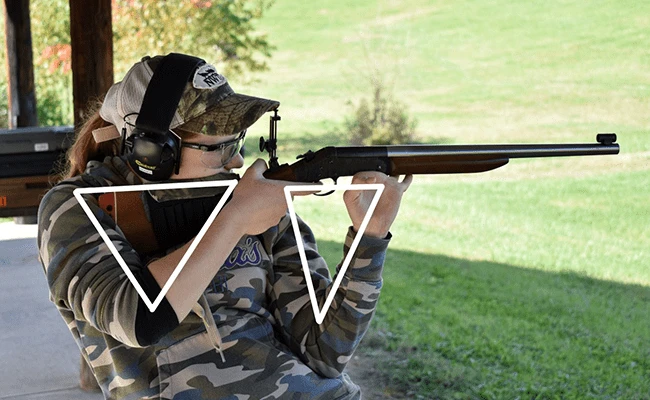Golf is often described as a game of inches—on the scorecard, on the greens, and even in personal space. While most new players focus on learning the swing, the rules, and how to keep pace, one of the most critical and often overlooked aspects of golf etiquette is knowing where to stand when others are hitting.
Unlike many sports, golf is played in almost total silence. There’s no crowd noise, no shouting mid-play, and no constant movement in the background. Why? Because every shot matters—and concentration is everything. Standing in the wrong place, making a slight noise, or shifting your weight at the wrong time can completely throw off a player’s focus. That’s why knowing where not to stand is just as important as knowing how to swing a club.
The Invisible Bubble: Respecting a Golfer’s Space
When someone is preparing to hit a shot—whether it’s off the tee, from the fairway, or on the green—they’re usually locked into a pre-shot routine. That moment requires total focus. To help preserve that concentration, every golfer is surrounded by an invisible “bubble” of space. Good etiquette means keeping clear of that bubble.
In general, never stand directly behind or directly in front of the player. If you’re behind them, they may sense your presence in their peripheral vision. If you’re in front, you’re not only a distraction—you’re also in danger.
Instead, stand off to the side, several yards back, and slightly behind the line of play. This gives the player space to focus and ensures you’re not unintentionally interfering with their routine.
Common Mistakes to Avoid
One of the most frequent mistakes new players make is walking or standing on a fellow golfer’s line of sight or through line. On the tee box, this might mean standing just a bit too close or directly in their field of vision. On the fairway, it could mean lingering in front of a player while they’re about to swing. And on the green, it often shows up as walking on someone’s putting line or shadowing their stroke.
Even if you’re not moving or making noise, your presence can be distracting. It may seem small, but when a player is lining up a crucial shot, every detail counts. And it’s not just about courtesy—it’s about respect for the integrity of the game.
Another mistake is standing too close behind someone during their backswing. Many golfers instinctively know when someone is hovering in their blind spot, and it creates tension. Even if they don’t say anything, it’s uncomfortable and can subtly affect their shot.
Where You Should Stand
The safest and most respectful place to stand is well behind and slightly to the side of the player. This gives them clear space to swing without worry. If you’re in a group and waiting your turn on the tee box, stand several feet away and avoid being directly in their line of sight or motion.
On the fairway, try to stay clear of their intended target line. You can be nearby, but keep a good buffer and stay still until the shot is complete.
On the green, observe carefully where a player’s ball lies and where their putting line extends. Don’t step on their line—or cast a shadow across it. If you’re unsure, ask. Most golfers appreciate the consideration and will guide you on where to safely stand.
Noise and Movement
Just as important as physical position is the idea of stillness. Movement draws attention. Even subtle actions—like adjusting your glove, pulling a club, or rustling your scorecard—can be distracting if they happen during a shot. Wait until the player has struck the ball before shifting position or preparing for your turn.
It’s also best to remain quiet when others are hitting. Whispering, coughing, or even clearing your throat can pull someone out of their rhythm. If you need to sneeze or move suddenly, try to do so well before or after the shot, not during a player’s swing.
Many golfers will forgive a poor shot, but they’ll remember if their shot was disrupted by a lack of awareness from a playing partner. A little silence and stillness go a long way.
Caddie and Spectator Etiquette
If you’re acting as a caddie, a parent, or a spectator at a junior event or casual round, the same rules apply—only more so. Stand far enough away that you’re not causing pressure, but close enough that you’re available if needed. Be mindful of shadows, cameras, or bags that might get in the way.
At larger courses like Manor & Ashbury Resorts, which host a wide range of players, tournaments, and casual visitors, staff often see players unsure of where to stand during a round. That’s why many resort courses now provide gentle reminders or guidance through signage or starter briefings. It helps set expectations early and ensures that all players can enjoy their game without unnecessary distractions.
Teaching Etiquette to Beginners
If you’re introducing a friend, child, or partner to golf, teaching them where to stand is just as important as teaching them how to swing. Many new players simply don’t know, and they may feel embarrassed when corrected mid-round.
A simple way to teach it is by pointing out the “quiet zone” around a player. Encourage them to watch where others go, and explain that stillness and silence during shots are signs of respect. That small bit of coaching early on can prevent awkward moments later and make the round smoother for everyone involved.
What to Do If Someone Breaks the Rule
In most cases, if someone stands in the wrong place, it’s unintentional. A friendly, non-confrontational reminder is usually all it takes. You might say something like, “Hey, do you mind stepping just a bit to the left? I think you’re in my line.” That keeps the tone light but respectful.
Avoid snapping or showing visible irritation. Golf is a game of composure, and the way you handle these moments often speaks louder than the issue itself.
If you’re unsure whether your position is a problem, ask. Most golfers will appreciate that you’re trying to do the right thing.
Golf is about more than swinging a club—it’s about understanding the shared experience of the game. Where you stand during another player’s shot is a small detail, but it reflects a deep level of respect for the sport and the people you’re playing with.
Good etiquette is invisible when done correctly. You might never get thanked directly for standing in the right place or staying still during a shot—but your playing partners will notice. And your reputation as a respectful golfer will grow quietly, just like your skills.
So next time you step onto the course, remember: where you don’t stand is just as important as where you do. Give each shot the space it deserves, and you’ll contribute to a better game for everyone—yourself included.











